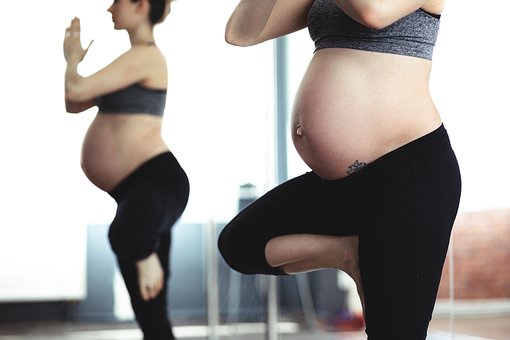Many clients I see are really keen to get back into shape and exercise after having baby, but steps should be taken to protect the pelvic floor and core prior to engaging in any high impact or high intensity exercise.
What is Diastasis Recti?
Diastasis Recti, or abdominal separation, is the widening of the gap between your ‘six pack’ (rectus abdomius) muscles. The connective tissue (aponeurosis) that joins all the musculature of the abdominal sheath begins to stretch to accommodate the increased intra-abdominal pressure. Basically, this means the material down the centre of your ‘six pack’ muscle widens apart to accommodate the growing uterus. Abdominal separation can affect 2 out of 3 mum’s post-partum, so it’s very common, and very treatable.

What exercises not to do post-partum and during pregnancy.
- Crunches, sit-ups, planks, and some Pilates moves like straight leg lifts, basically anything that places strain and sheering force on the abdominals. These moves can cause widening of your diastasis, pressure and strain on your already weakened pelvic floor and lower back pain.
- High impact or contact sports are also not advised.
If you experience leaking whilst exercising after pregnancy, seek help from a women’s health exercise physiologist or a women’s health physiotherapist. Incontinence is common – but not normal – and 100% treatable.
What you can do to help.
- You can help to both protect and heal your diastasis aka abdominal separation through good nutrition, good posture and exercises to connect with your abdominals.
- Eating protein and zinc rich foods, such as meat, fish, nuts, beans or eggs, and vitamin A rich foods like kale, broccoli, sweet potato can provide your body with the nutrients it requires to heal and repair. Eat plenty of fibre rich foods daily and drink an adequate amount of water to maintain healthy bowel habits – and don’t delay the urge to empty your bowels!

- Being mindful of your posture (when you are nursing your baby, carrying other children or shopping etc) is also important in your recovery of your abdominal muscles. No matter how much fantastic work you are putting in at the gym, if you carry poor posture for the other 12 hours of the day, you will undo all your hard work!
5 Exercises to help abdominal separation and your pelvic floor.
- Aerobic work such as bike, walking, deep water running, aqua aerobics, swimming and step classes
- Glute bridges
- Squats (can be to a chair or with assistance from a swiss ball)
- Side planks from knees
- Belly breathing

What is belly breathing?
Briefly, belly breathing is getting your pelvic floor, transverse abdominus, deep lower back muscles and diaphragm all moving together in sync. These 4 muscles make up your ‘core’. Inhale – let your belly expand and pelvic floor relax Exhale – gently draw up your pelvic floor (imagine you have a straw in between your legs and you are sucking up a pea from the ground, hold it) whilst still exhaling. This can take some guidance to get right but integral to learning to re integrate the pelvic floor and strengthen your core.


